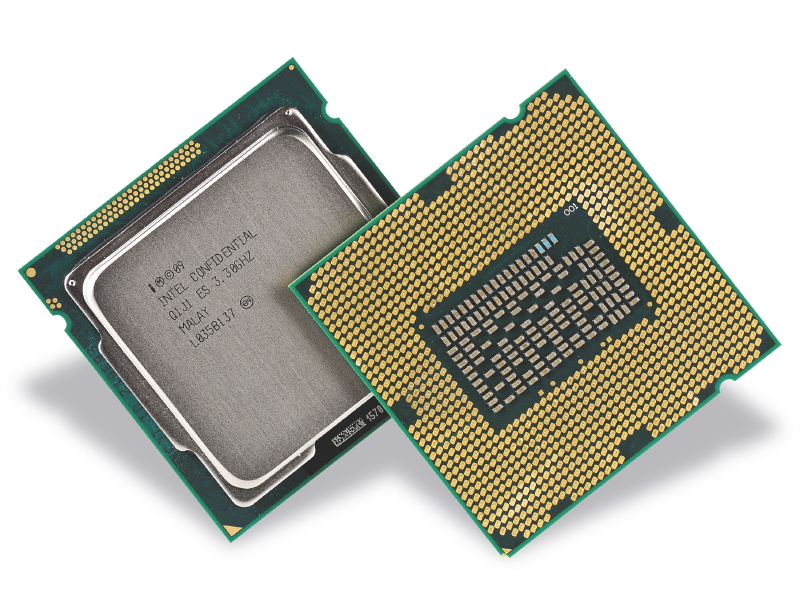Intel's Sandy Bridge video transcoder cock up
Face-palm moment as Intel realises Quick Sync Video isn't enabled

Did Intel forget to enable its intriguing Quick Sync Video transcoder engine, as found in its new Sandy Bridge processors, on the P67 platform?
You can read our full review of the launch chips, including the awesome Intel Core i7 2600k.
For those who haven't, the elevator pitch for Intel's new processor architecture goes something like this. It comes in dual and quad-core trim. It has extremely impressive 2D and 3D video capabilities. And it's bonkers quick.
It is not, however, perfect. Initially, we thought all the problems were due to dumb marketing decisions. We're still pretty sure, for instance, the restriction of the fastest HD 3000 graphics engine to the two unlocked K Series models, the Core i5 2500K and the i7 2600K, is purely marketing driven.
Likewise, we think it's unlikely Intel really needs another new CPU socket – especially one that drops just a single pin – and we suspect the overclock-killing internal clock generator was marketing motivated rather than architecturally essential. As for Intel's increasingly batty branding, the less said the better - quite literally. The last time we tried to explain what the whole Core i3, i5 and i7 shebang meant, it nearly reduced us to tears.
Intentional omission or embarrassing oversight?
However, there's one Sandy Bridge anomaly that increasingly looks like an oversight at best and a major cock up at worst. It involves Quick Sync Video, the 2D video transcoding engine that's found in all Sandy Bridge processors, regardless of specification or core count.
Sign up to the TechRadar Pro newsletter to get all the top news, opinion, features and guidance your business needs to succeed!
More accurately, the Quick Sync Video engine is actually part of the new integrated Intel HD Graphics core. The problem, of course, is that the P67 chipset is discrete. In other words, it doesn't support the integrated graphics core.
Exactly why you would want to completely rule out any possibility of using the integrated graphics isn't clear. Intel argues the P67 is a performance chipset and that's fair enough. But there's no harm in having the integrated core as a back up option.
Anyway, the current upshot of all this is that Quick Sync Video requires the HD Graphics core to be enabled. But you can't enable the HD Graphics core on any P67 board. So, you can't have Quick Sync Video on the highest performing Sandy Bridge platform.
That's a serious downer for two reasons. Firstly because Quick Sync Video looks like it might well be killer for video encoding. Our initial testing suggests it's nearly four times quicker than CPU encoding. And bear in mind, that's CPU encoding on the 2600K, which is a ludicrously fast processor. Quick Sync Video is probably ten times faster, perhaps even more, than a chip like an old Core 2 Duo.
The problem with P67
The other problem is that the P67 is currently the only chipset that fully supports Intel's new overclocking regime. You can read more about that in our Sandy Bridge review, but the bottom line is that performance enthusiasts will want the P67 chipset. But they'll also want to use Quick Sync Video. And since they've paid for the frigging HD Graphics core, why shouldn't they be able to use that? It's all thoroughly unsatisfactory.
Making this whole story even more intriguing is the rumoured arrival of a third consumer-orientated Sandy Bridge chipset known as Z68. If the scuttlebutt is correct, the Z68 is the one chipset to rule them all. It supports both the HD Graphics core and the overclocking options. In other words, it's what the P67 should have been.
Quite why the Z68 is not available at launch we cannot say with certainty. But it sure looks like Intel suddenly – and belatedly - realised the P67 has a major problem.
Technology and cars. Increasingly the twain shall meet. Which is handy, because Jeremy (Twitter) is addicted to both. Long-time tech journalist, former editor of iCar magazine and incumbent car guru for T3 magazine, Jeremy reckons in-car technology is about to go thermonuclear. No, not exploding cars. That would be silly. And dangerous. But rather an explosive period of unprecedented innovation. Enjoy the ride.